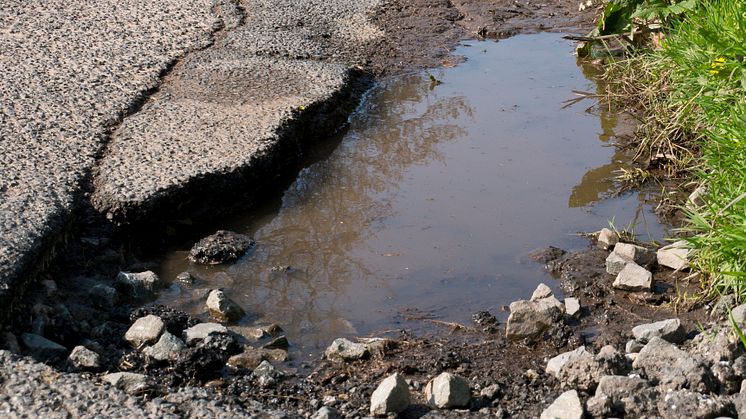
News -
The human cost of the pothole pandemic
Britian’s pothole pandemic is leaving drivers tearing out their hair and the state of the road network is laid bare by the publication of the AIA’s annual Alarm report earlier this month. It found that less than half (47%) of local road miles were rated as being in good condition, with 36% adequate and 17% poor.
The RAC estimates that, on average, there are around six potholes per mile on council-controlled roads in England and Wales. Depending on their size and depth, potholes can cause expensive damage to vehicles and pose a danger to motorists, cyclists, pedestrians and those using e-scooters.
Research conducted by IAM RoadSmart found that more than half of drivers (56%) have swerved or braked sharply to avoid a pothole in the last 12 months, with a third (32%) even changing their route to avoid a pothole-riddled road. These actions put drivers and other road users at risk, either because of evasive swerving or because drivers are forced to use unfamiliar routes. DfT (Department for Transport) data suggests that nearly 500 collisions were caused by poor or defective surfaces, resulting in four fatalities. For those on two wheels, hitting a pothole can cause them to come off their bike and injure themselves on impact with the road, or even collide with other traffic.
While potholes can be unavoidable, here’s some tips to help minimise pothole panic.
Are you alert?
One of the simplest ways to protect you and your vehicle is to stay sharp and focused when driving and watch your speed. Be extra cautious when driving at night.
Keep your distance
Try to maintain enough space between you and the vehicle in front. This will allow you to clearly see the road ahead and keep an eye out for any rough surfaces. Only where possible and safe, drive around puddles too as there could be holes hidden beneath patches of water.
Make sure your tyres are in good condition.
One effective way to reduce the risk of damage to your vehicle is to ensure your tyres are in good condition and have the correct pressure. You can find more advice about tyre safety here.
Sharp braking can make things worse
Sharp braking for a pothole not only creates risk of a collision if the vehicle behind is too close, but it can also make impact with the pothole worse. Brakes will put added energy into the wheel which can cause greater damage. You are better off braking gently prior to going over a pothole and gently coasting.
Get a grip.
Keep a firm grip on the steering wheel. When most of us are driving or riding we’ll be surrounded by other vehicles. So, it’s important to mention that swerving an oncoming pothole can be incredibly dangerous.
Damage
If you hit a pothole, even at a low speed, it can cause damage to your vehicle. It’s important you pull over when it’s safe to do so to inspect any visible damage to your wheels and tyres. Also, listen out for any new noises your vehicle may be making. If you can’t see any visible damage, and you believe it’s safe, continue your journey. Keep checking to make sure your steering wheel remains centred and isn’t pulling to one side. Aside from punctures, potholes tend to cause most damage to suspensions and shock absorbers.
Detail it and report it
Take notes – Park somewhere safe and write down all the details of the incident including the location of the pothole and, if you can, its rough size and depth. If your car is damaged, you may be able to claim compensation. Check here to see who you need to contact. Remember, if the highways authority is unaware, then it will take longer to fix.
Give cyclists a wider berth
Drain and manhole covers are often on the left-hand side of the lane, which is where cyclists tend to position themselves. If a cyclist needs to take evasive action to avoid a pothole, it’s far safer for them to have extra space.
IAM RoadSmart Director of Policy and Standards Nicholas Lyes said: “Potholes are not only a nuisance for drivers, but for those on two wheels they are a road safety hazard. Sadly, the state of our roads is becoming something of a national embarrassment. We need urgent action from the UK Government to ensure proper funding is brought forward to get our road surfaces fixed as soon as possible.”






